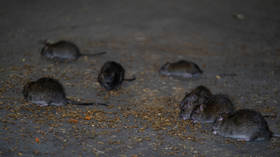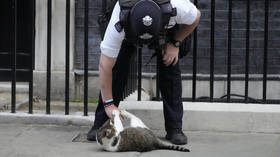Millions of NYC rats could have Covid-19 – study

The iconic rats infesting New York City are susceptible to infection by multiple strains of SARS-CoV-2, the virus that causes Covid-19, researchers with the University of Missouri found after analyzing rodents caught at various locations near city sewers during three months of 2021.
The results of their study, published on Thursday in the journal mBio, showed 13 of the 79 rats (16.5%) tested positive for the virus, a figure that can be extrapolated to potentially 1.3 million of the city’s 8 million rats.
The researchers found that not only could the rats be infected with Alpha, Delta and Omicron variants of the virus in both their upper and lower respiratory tracts, but that SARS-CoV-2 mutated after infecting them to adapt to its new hosts – something researchers said was important for being able to predict the possibility of future strains breaking back out and reinfecting humans.
The findings “highlight the need for further monitoring of SARS-CoV-2 in rat populations for potential secondary zoonotic transmission to humans,” principal investigator Henry Wan explained in a press release accompanying the study’s publication.
The Covid-19 pandemic was initially blamed on zoonotic transmission of a mutant bat coronavirus to humans through an intermediate host in a wet market in Wuhan, China. However, subsequent evidence pointed to the virus spreading in other areas of China as early as October 2019, before the first Wuhan cases were detected – and researchers believe some cases also occurred in Europe and the US in the last months of 2019.
A recent investigation by the US Department of Energy concluded the virus may have been “leaked” from a Chinese lab. Beijing has countered that the World Health Organization’s own investigation found it “extremely unlikely” the Wuhan lab was the source of the outbreak.
Rats are far from alone in their susceptibility to the virus that causes Covid-19. Some 17 million mink were preemptively exterminated in Denmark in 2020 after some were found to be infected with a new strain of the virus thought to menace humans, a decision later determined to be illegal.
Last year, Hong Kong ordered the culling of 2,000 imported hamsters after a resident’s Covid-19 infection was traced to his handling them in a pet shop; a ban on owning foreign hamsters was only lifted in January.
And it was recently revealed that the UK government nearly ordered the mass extermination of residents’ pet cats in order to “flatten the curve” after a Siamese was found to have contracted the virus in 2020, despite next to nothing being known about how the disease was transmitted between species.













